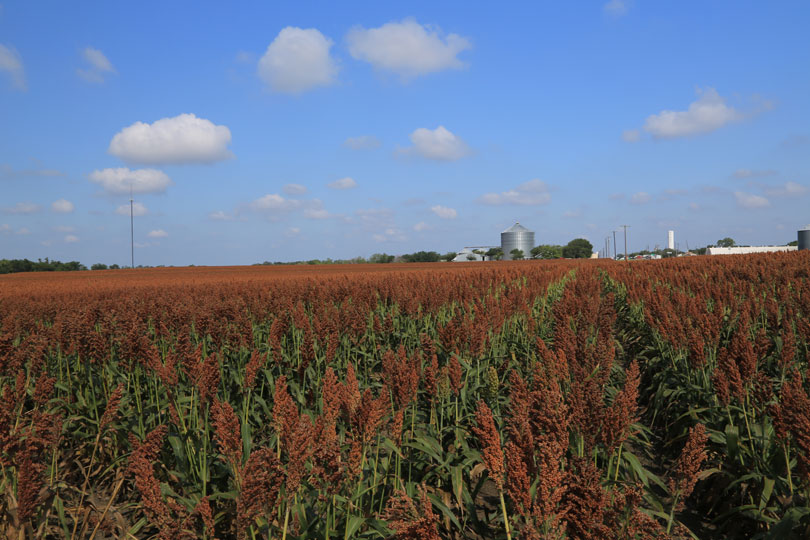By Justin Walker
Communications Specialist
An abundance of rain closed the window to plant cotton, but other crops still have potential, according to a Texas A&M AgriLife Research specialist.
Previous trials in the Amarillo area have shown dryland grain sorghum, corn and other crops have benefited from the excess moisture, Dr. Qingwu Xue, AgriLife Research crop physiologist, said.
“With all the moisture in the ground, producers still have an opportunity to get a crop in the ground and see good yields,” Xue said. “Which crop will depend on their particular circumstances in the field.”
Most sorghum is already managed on limited irrigation or dryland due to its drought tolerance, Xue said. Dryland sorghum made 50-90 bushels per acre on average when planted in late June the past two years, even with rain completely stopping in the following months.
“This area’s optimal planting date is June for sorghum anyway, because that’s when the chances of rain are the best in most years,” he said.
But pests, including sugarcane aphids, could be an issue for late-planted sorghum. Growers should try to select varieties with resistance and be prepared to spray.
“The last two years, the sugarcane aphids have arrived in late July and August, and that is when the sorghum will be in the bloom stage,” he said. “This is one of the most vulnerable times.”
Planting date and hybrid selection had a significant impact on sugarcane aphid infestation, grain yield and water-use efficiency in 2017 and 2018, Xue said. Early May planted sorghum in those same years experienced more drought stress and lower yields.
Mid- to late-season rainfall has benefited later-planted sorghum, Xue said. In 2017, the average yield for early May sorghum came in at 25 bushels per acre. Late June-planted sorghum almost tripled that number at 70 bushels per acre.
A late-planted corn study is still ongoing for Xue, but he is optimistic about what he has seen so far.
“I know we can push the date to July 1 and still make about 150 bushels per acre in irrigated corn,” he said.
For more information, including other alternative crops with potential, click here.

